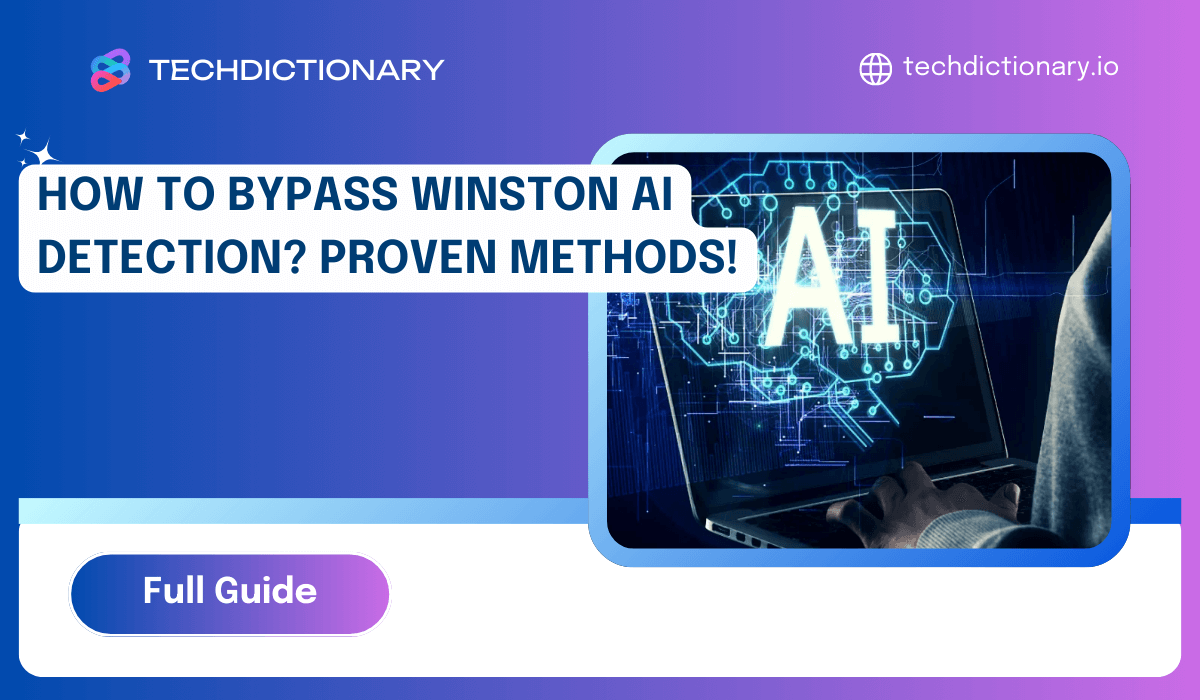
Getting detected by Winston AI on your work? You’re not alone. This article from TechDictionary will explain how to bypass Winston AI on your content naturally. By learning how to make humanistic errors, changing your tone, and using other tools, you can protect your work and keep it undetectable. Let’s dive in now!
Winston AI is a sophisticated tool that identifies whether content is created by humans or generated by AI. It analyzes language, structure, and style, comparing these elements to a dataset of known human-written and AI-generated texts. Key indicators of AI-generated content include:
With a dataset of over 10,000 texts, Winston AI can reliably detect subtle signs of AI authorship. This tool is valuable in education, publishing, and marketing, ensuring content remains authentic and free from machine-generated text.
However, if you’re looking to explore a more comprehensive comparison of AI detection tools, including how Winston AI measures up against other detectors like Originality AI, our detailed comparison of Winston AI vs Originality AI provides in-depth insights on their strengths, detection accuracy, and unique features. Whether you’re an educator, content creator, or business, this guide can help you choose the right tool for your needs.
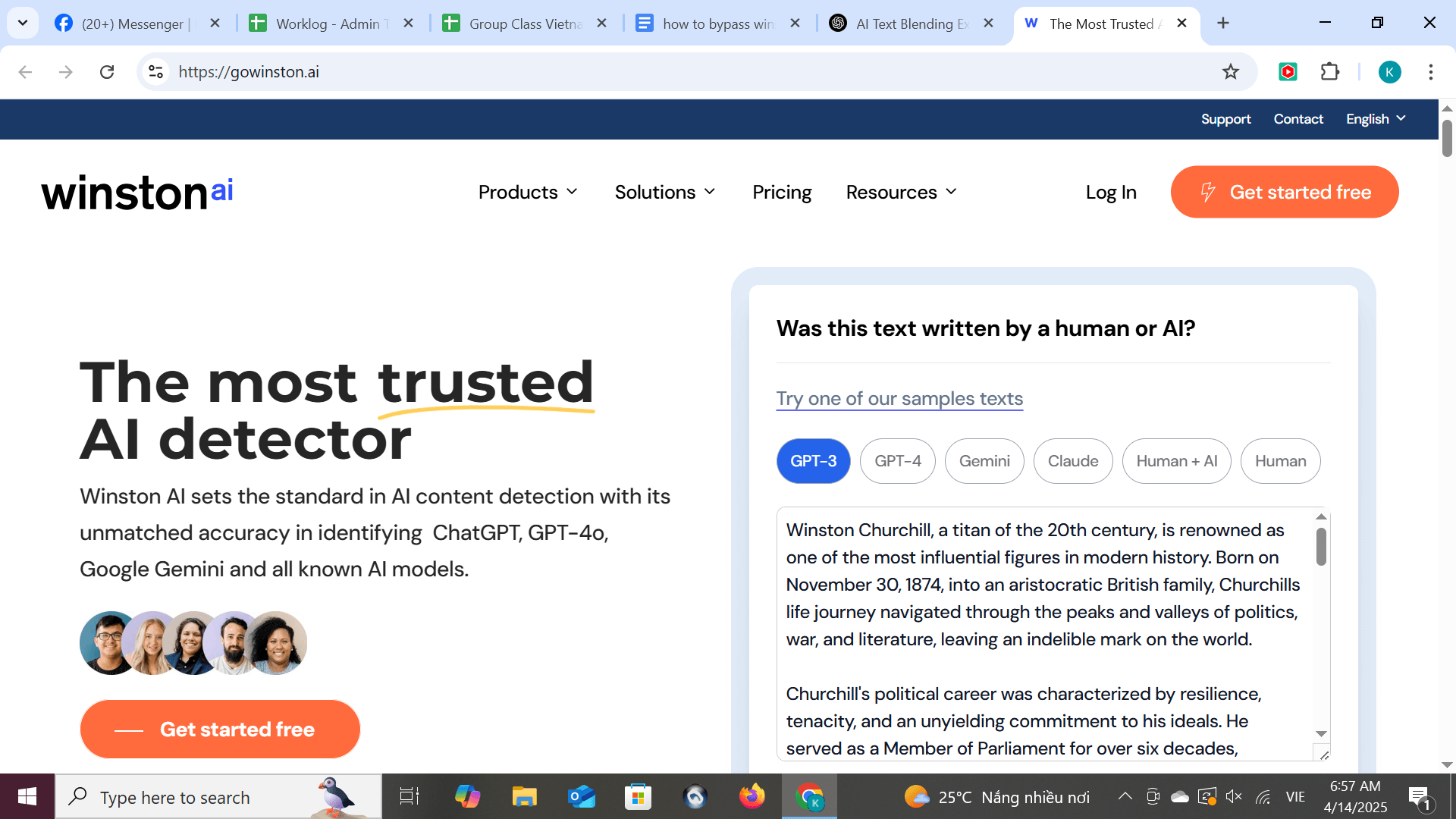
Winston AI Homepage
You may be interested in: Winston AI vs Turnitin: Which is Best AI Detection in 2025?
AI-generated content is usually perfect, with no spelling mistakes or errors. However, human writing often has small mistakes, like misspelled words, awkward phrasing, or missing punctuation. To make AI content sound more like it was written by a human, you can intentionally add a few mistakes. For example:
By doing this, you make the text sound more natural and human, which helps prevent it from being flagged by Winston AI. The system looks for signs of overly perfect, robotic writing.
Blending AI-generated text with human-written content is a great way to make your writing less predictable. Start by creating a draft with AI, then go back and edit it yourself. You can add your sections or rewrite parts of the text.
This mix introduces natural inconsistencies, something AI usually lacks. By adding your personal touch, such as your unique voice or perspective, you make the content feel more human and reduce the chance of it being flagged as machine-generated by Winston AI.
AI uses a consistent tone and sentence structure, which is often too formal or mechanical. To bypass Winston AI, change the tone of your writing to sound more conversational. For instance:
This variation mimics human writing, where tone and structure are far more fluid and less predictable. Changing the flow of your sentences helps the content appear more organic and reduces the likelihood of detection.
For a more effective strategy, consider using a paraphrasing tool to avoid AI detection to modify AI-generated content and make it sound more natural.”
One effective way to make AI-generated content sound more natural is by using humanizing rewriting tools. These tools enhance text flow by adjusting sentence structure, word choice, and tone, making the content less robotic and more engaging.
They introduce variety and a conversational tone, smoothing out awkward phrasing and helping to bypass AI detection. By using these tools alongside manual editing, you can create authentic, naturally readable content while saving time.
AI writing is very predictable in terms of sentence length and vocabulary. To make your content more human-like, vary the sentence lengths and use different word choices. For example:
This technique introduces unpredictability and complexity, which is a hallmark of human writing. The more varied your sentence structure and vocabulary, the harder it is for Winston AI to detect that the text is machine-generated.
To effectively bypass Winston AI, it is important to combine all of the techniques mentioned. Humanizing your content involves:
By mixing these methods, you can create more authentic content and reduce the chances of detection.
You may also like: How to Bypass GPTZero AI Detection? 6 Best Ways for 2025
We’ll test an AI-generated content sample with Winston AI to check if it’s flagged as machine-generated. Then, we’ll use three tools to modify the content and retest with Winston AI to see if the text is humanized. Let’s see the results!
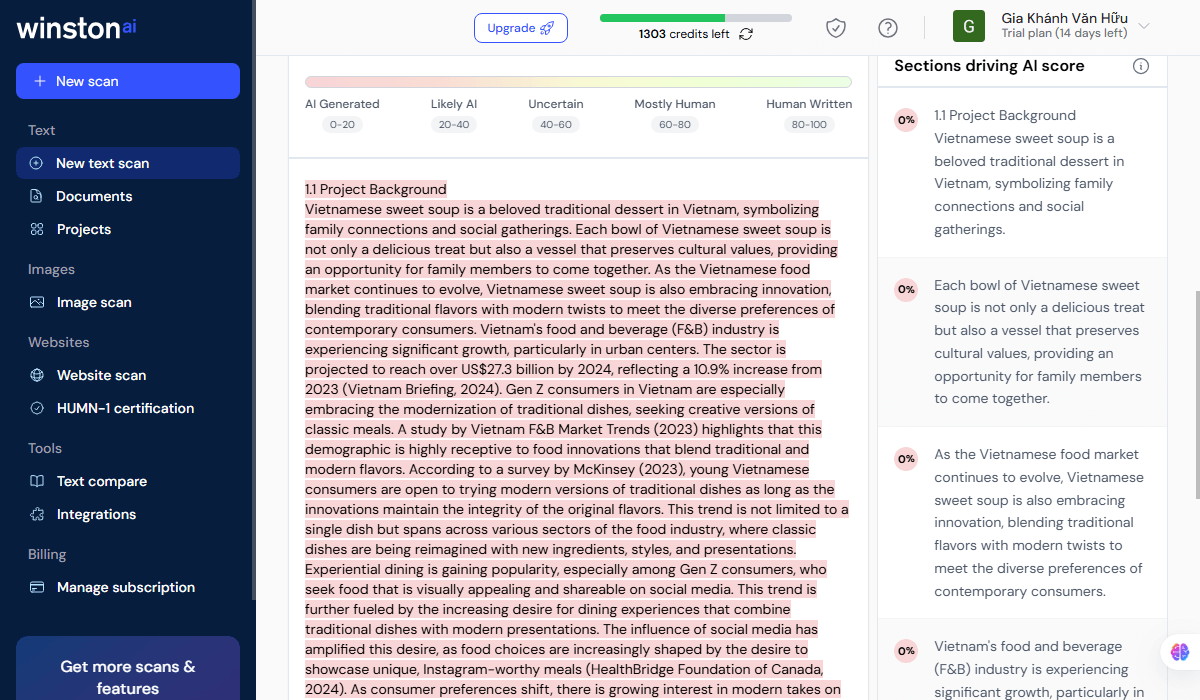
AI content flagged by Winston AI
Undetectable AI is an online tool that helps both detect and rewrite AI-generated content. It’s built-in “humanizer” feature transforms machine-written text into more natural, human-sounding language by adjusting tone, sentence flow, and word choice. This makes the content harder to detect by tools like Copyleaks, GPTZero, Grammarly, and others.
Step 1: Humanizing the Text with Undetectable AI
We began by running the AI-generated content through Undetectable AI’s humanizer tool, which adjusted the tone, word choice, and flow to make the text more natural and human-like.

Humanized content using Undetectable AI tool
Step 2: Testing the Humanized Content with Winston AI
Next, we ran the modified content through Winston AI to see if Undetectable AI could make it appear human-written and bypass detection more naturally.

Winston AI Retest After Humanizing with Undetectable AI
Stealwriter is another tool designed to humanize AI-generated content by refining the text to make it sound more natural and less robotic. It adjusts sentence structure, tone, and vocabulary to help the content blend seamlessly with human-written text, making it more difficult to detect by AI detection tools like Winston AI.
Step 1: Humanizing the Text with Stealwriter
We started by running the AI-generated content sample through Stealwriter to modify the tone, sentence flow, and word choice, making it sound more human-like.

Humanized content using StealthWriter
Step 2: Testing the Humanized Content with Winston AI
We modified the content and tested it with Winston AI to check if Stealwriter could humanize it enough to avoid AI detection.
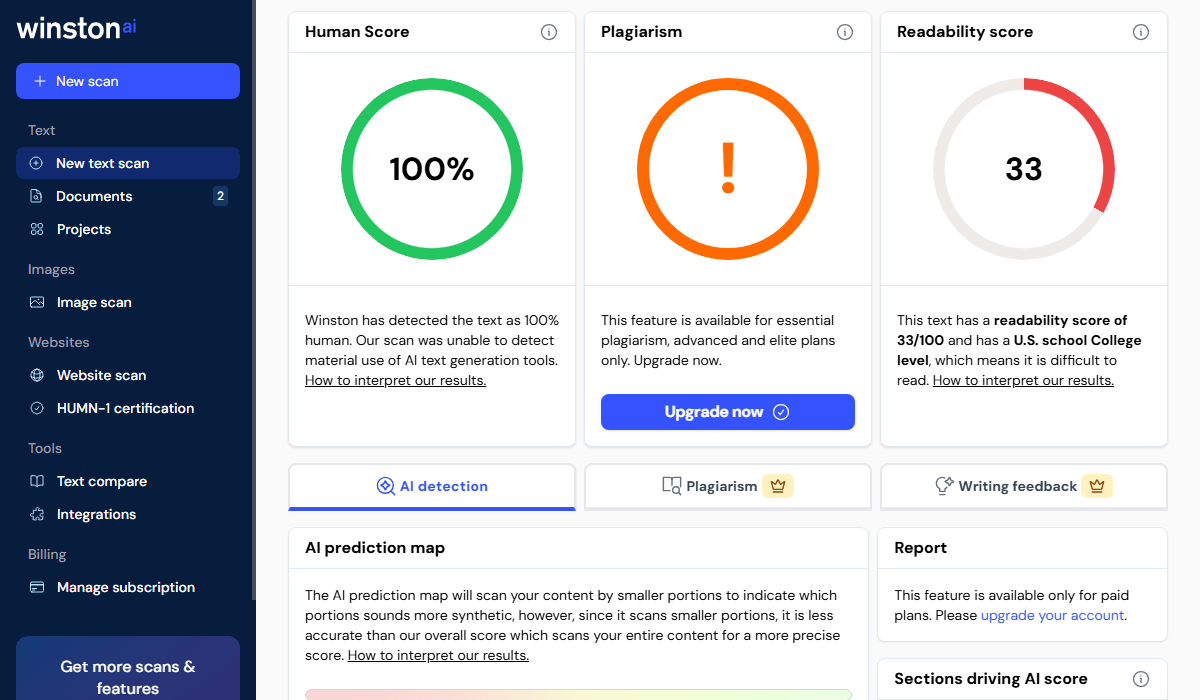
Winston AI Retest After Humanizing with Stealwriter
Bypass GPT is built to help AI-generated content avoid detection by making it sound more human. It works by subtly adjusting sentence structure, word choice, and phrasing, aiming to create text that feels naturally written, reducing the chances of being flagged by detectors like Winston AI.
Step 1: Humanizing the Text with Bypass GPT
We used Bypass GPT to refine the AI-generated content, adjusting the tone, word choice, and flow to make it sound more human-like.
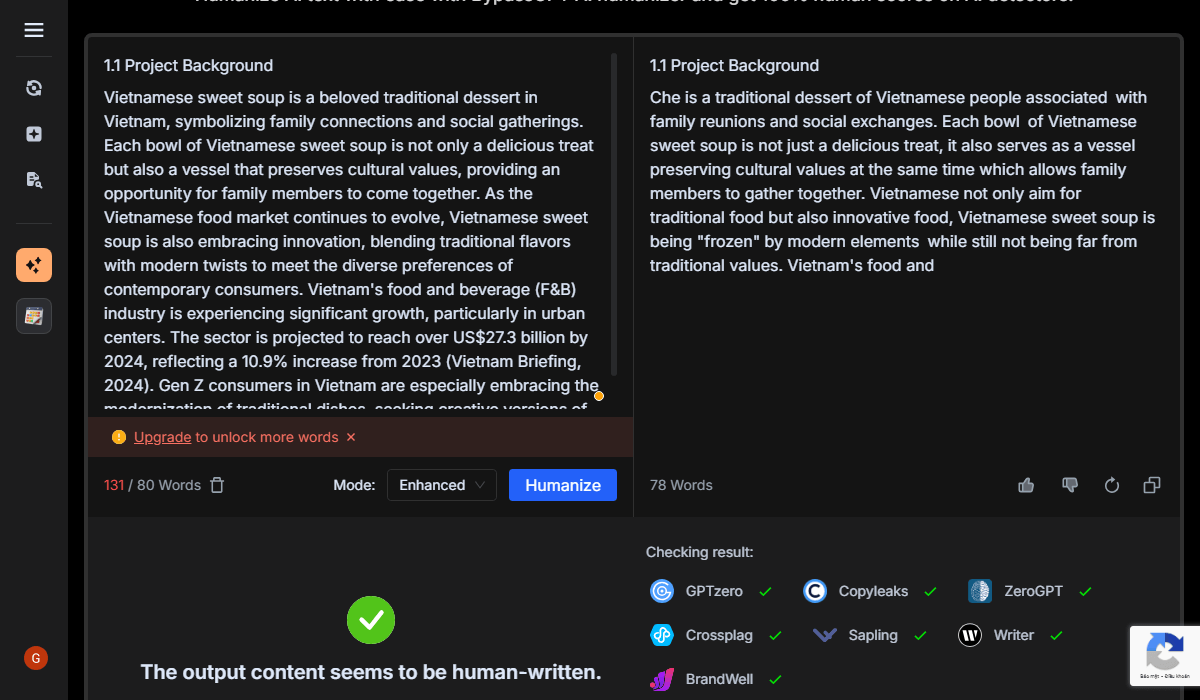
Humanized content using BypassGPT
Step 2: Testing the Humanized Content with Winston AI
After humanizing the text with Bypass GPT, we checked it with Winston AI to see if it could bypass detection as AI-generated content.
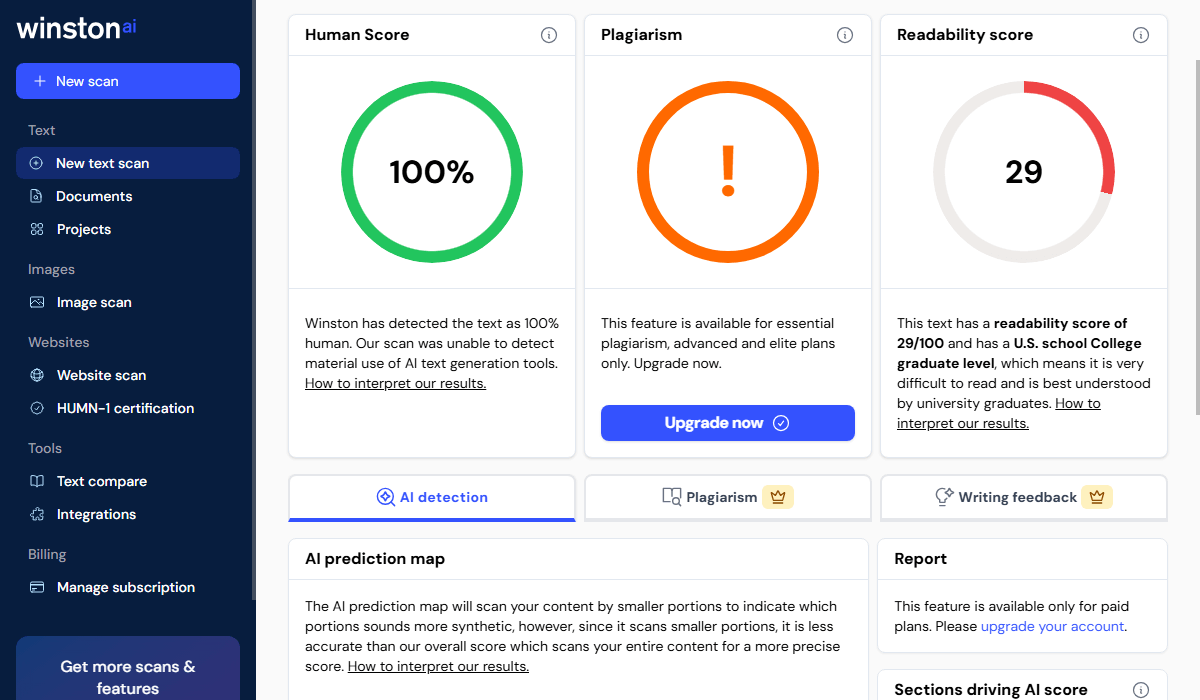
Winston AI Retest After Humanizing with BypassGPT
Practical Testing Summary:
| Tool | AI Detection Score (Winston AI) | Readability Score | Effectiveness |
|---|---|---|---|
| Undetectable AI | 89% Human | 49/100 | Effectively reduces AI detection, but readability can be improved for easier comprehension. |
| StealthWriter | 100% Human | 33/100 | Excellent at bypassing AI detection, though readability may need further tweaks for a smoother read. |
| Bypass GPT | 100% Human | 29/100 | Strong in bypassing AI detection but less effective in terms of readability. |
While Winston AI helps verify authenticity, there are practical reasons why writers and marketers might want to avoid detection. For example, in terms of SEO, search engines prioritize content that appears naturally written. If flagged as AI-generated, your content may suffer in rankings.
Privacy is another factor -many users simply don’t want others to know they’re using AI tools. In industries where speed matters, AI accelerates content creation, but detection tools like Winston AI can slow things down. Bypassing it ensures your work stays effective and credible.
It’s also worth noting that Winston AI is a popular choice among educators and is frequently listed among the best AI detection tools for teachers. It helps teachers verify the originality of student submissions, making it a valuable tool for maintaining academic integrity.

Winston AI Detected Capability
How to bypass Winston AI? The most effective methods include introducing minor errors, varying sentence structure, and adjusting tone. Tools like BypassGPT AI, Undetectable AI, and Originality AI can help make your content sound more natural, reducing detection chances.
However, bypassing AI detection is not encouraged for unethical use. It’s important to focus on creating authentic, high-quality content. Use these tools sparingly to enhance your work, but always prioritize originality and creativity.

